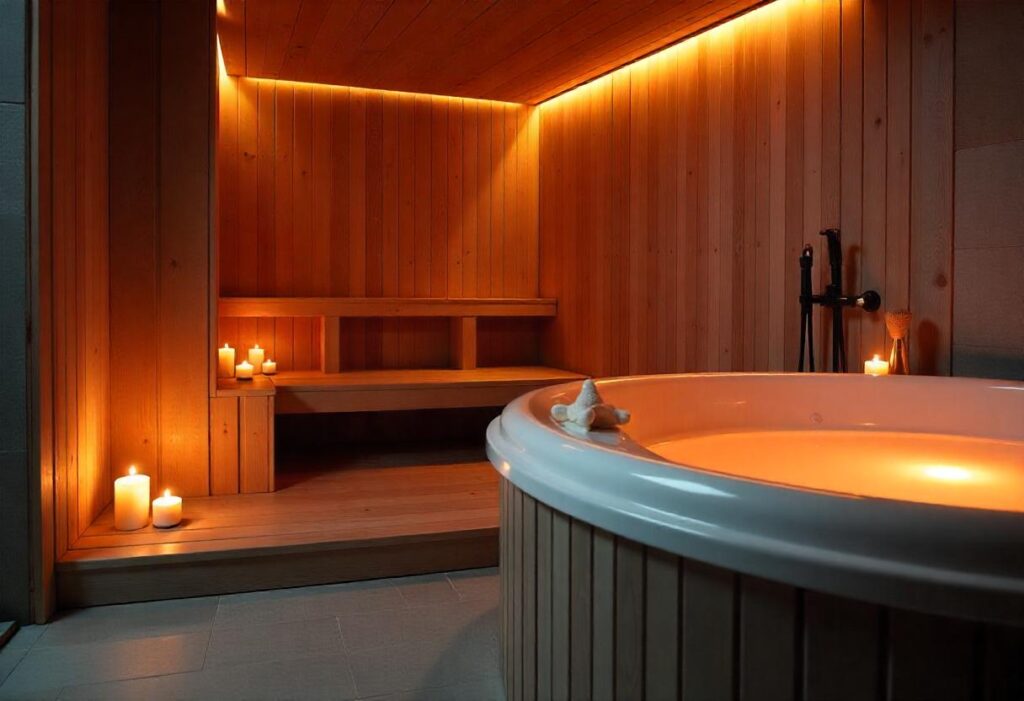Nothing can make mornings more painful, particularly during the colder months, than a frigid bathroom. Whether you’re remodelling or simply tired of chilly tiles and misty mirrors, determining the best way to heat a bathroom can transform your space. Here are some tips to consider when you’re in a market like this: Portable heaters, wall-mounted infrared heaters, with so many choices, can make it difficult to determine how to heat a bathroom properly.
In this comprehensive guide to buying bathroom heaters, we’ll discuss what to look for, types, energy savings tips, and safety to ensure that you can make an informed, warm and wise choice. This article will weigh up the absolute pros and cons of each, Australian IP ratings, actual running costs, installation and wiring considerations for Australia, and where to install them, as well as maintenance and cleaning, and some simple safety FAQs.
Bathroom Heater Pros and Cons
| Bathroom Heater Type | Best for | Pros | Cons |
|---|---|---|---|
| Wall‑mounted panel/fan | Small–medium bathrooms | Even, ambient warmth; slim; child‑lock/timers on many models | Slower than lamps; needs correct IP rating and hardwiring in bathrooms |
| Ceiling 3‑in‑1 (heat lamp + light + exhaust) | Fast, targeted warmth + ventilation | Instant heat; handles steam; neat all‑in‑one | Louder; harsh “spot” heat; needs suitable ceiling cavity and licensed installation |
| Infrared panels (incl. mirror/towel bar panels) | Sleek, quick radiant warmth | Heats people/surfaces directly; fog‑free mirrors; silent | Air can feel cooler; placement matters for coverage |
| Underfloor (electric/hydronic) | Renovations; luxury, even heat | Uniform warmth; lower operating temps; low maintenance | Higher upfront cost; floor height/reno disruption |
| Heated towel rail | Towel drying + supplemental warmth | Low wattage; drier, fresher towels | Won’t heat whole room alone |
| Portable bathroom‑rated heater | Renters; short‑term use | No installation; flexible | Safety/placement limits; remove before running water |
Types of Bathroom Heaters
The type of heater that’s best for you will likely depend on the size of your bathroom, its design, and the amount of heat it requires. Let’s figure out some of the popular choices and their virtues.
Wall-mounted bathroom heaters
Bathroom wall heaters are a great idea for homeowners who want a stunning focal point that provides consistent warmth without compromising the premium living space typically associated with their primary heat sources. These are generally hard-wired, multiple-wired, wall-mounted models, which are ideal for permanent use in colder regions or larger bathrooms. Their bottom position makes the best use of space, and they reduce the risk of splashing and tripping, which is perfect for bathrooms with limited space or high traffic. Models such as the Stiebel Eltron fan heater deliver rapid, even heat distribution and operate whisper-quiet, providing much relief to those who face cold mornings head-on.
When selecting a wall mount heater, consider panel or convection heaters that provide a constant warmth, or install fan-assisted models for quicker warm-up. When shopping around, look for options that feature thermostat control, safety cut-offs, and a sleek design that complements your bathroom décor seamlessly. Installation of these heaters should be performed by a qualified electrician, adhering to any local regulations.
Ceiling-mounted heaters
Ceiling-mounted heater or top-mounted heaters are a popular choice for bathrooms where wall space is at a premium, or where there’s excessive moisture in the air. In many cases, these arrive as part of multifunctional 3-in-1 units that include heating, lighting, and ventilation – a perfect way to reduce operational challenges in your bathroom while maintaining a minimal visual impact. A household favourite in Australia, ceiling-type heaters such as the Ventair Myka will fit effortlessly into your ceiling and provide the localised warmth that you want.
They’re great in larger bathrooms or those with high ceilings, where traditional heaters can struggle to distribute heat effectively. Short-wave infrared heaters, for example, provide quick, direct warmth to people and objects, reducing wasted energy and ensuring the highest level of comfort. If you’re renovating or building, ceiling-mounted heaters are a good bet for their efficiency, space-saving design and multiuse capabilities.
Towel warmer heaters
Towel warmer Heaters, how do you like that warm towel? These radiant heaters naturally warm the air to dry towels and reduce bathroom moisture, helping to prevent mould and mildew. Towel warmers are available in electric, hydronic, and liquid-filled models, and can be wall-mounted or freestanding, depending on the available space and your personal style.
Towel warmers are more flexible than they appear beyond the bathroom: they can also be used to dry delicate garments, warm robes or even heat blankets. Also efficient and energy-conserving for drafty homes are today’s electric styles, which provide warmth with minimal power consumption. Whether you are in pursuit of spa-like vibes or simply looking to do away with damp towels in general, a towel warmer is one of those relatively inexpensive items that can really add a touch of luxury to your life day in and day out.
Energy-Efficient Bathroom Heaters
When choosing a bathroom heater, it is increasingly important to focus on energy efficiency, which not only saves on electricity but is also environmentally friendly. Today, heaters come with all of the bells and whistles to help you achieve maximum comfort with minimal fuel consumption.
One of these features is a programmable thermostat that allows you to program exact temperatures and schedules. This ensures the heater runs only when needed, helping to avoid overheating and saving on your energy bill. There are also plenty of models that have a timer function, so you can program the heater to go on or off at certain intervals, which is useful for keeping it from running when the bathroom is empty.
Some heaters even have eco modes that conserve energy by maintaining a comfortable temperature instead of running at full blast. The DR998’s ceramic heating elements are also an energy-saving option because they heat up AND cool down faster (they keep hold of the heat longer) than other alternatives, which means that you are using less energy to get to where you are “just right”.
The use of infrared technology provides one of the most effective means of heating a bathroom. By heating people and objects directly, rather than the air, these heaters reduce the amount of energy lost. Infrared panel heaters are very efficient and can convert up to 90% of their energy into heat.
If you want luxurious heating that is also an effective source of heat, then underfloor heating systems are the way to go. These systems also operate at a lower temperature within an insulation layer to prevent heat loss into the subfloor, thereby increasing their efficiency.
Bathroom Heaters Installation Tips
Proper installation of a bathroom heater is crucial for both safety and proper function. A licensed electrician must install any hardwired or ceiling-mounted heater in compliance with local electrical codes. You’ll want a placement that won’t cause the heater to become too close to any water access directly, for safety reasons. Also, if you install the heater according to the manufacturer’s instructions, it should work as designed.
Bathroom Heater Maintenance: How to Clean a Bathroom Heater
Monthly light clean: Turn the power off at the circuit breaker. Vacuum vents with a soft brush attachment, then wipe exterior with a damp cloth (waste of paper towels). Prevent liquid leaks and corrosive liquids.
Ceiling fan/heat units: Unclip the fascia, unplug the modular fan/heater cassettes (if applicable), clean out lint and clear the heater wheel/element shroud. Frequent tripping is a symptom of a clog or a bad thermal fuse — call an electrician.
Towel rail / Panel: Brush the dust off the slats of the towel rail and, where possible, wipe with a soft cloth. Don’t hang wet towels over panel heaters; use the rail.
Yearly check: Check adequate fixing, cable strain relieving and clear exhaust ducting. A momentary scent of burning dust when started up for the first time in winter is generally harmless residue — power the thing down and check if it lingers.
FAQs
Yes, you can install a heater in your bathroom, but it must be one specifically designed for use in wet or humid areas. Standard heaters can pose safety risks, so look for bathroom-rated options like wall-mounted heaters, infrared panels, or underfloor heating systems. Always ensure the heater is placed away from direct water sources such as the shower or sink, and for safety, have a qualified electrician carry out the installation to meet local electrical codes.
Yes — when correctly installed (zoned placement, suitable IP, licensed wiring) and used as directed. They provide instant radiant warmth and often integrate exhaust to reduce moisture.
Generally, yes. Bathroom‑specific heaters are designed for moisture, provided they meet IP/zoning requirements and are installed and used correctly.
IPX4 means splash‑proof from any direction. It’s the usual minimum in Zones 1 and 2 around showers/baths. Outside those zones, IP24 panels are commonly used when hardwired by a licensed electrician in Australia.
Bathroom Heater Buying Guide Summary
Selecting the right bathroom heater is essential for creating a warm, comfortable, and energy-efficient space. From the modern appeal of infrared panel heaters to the indulgent warmth of underfloor heating and the convenience of wall-mounted or portable bathroom heaters, there’s a solution to suit every style, budget, and bathroom layout.
By evaluating factors like energy efficiency, installation costs, IPX4 safety ratings, and real user reviews, you’ll be well-equipped to make an informed decision. Whether you’re renovating or upgrading, choosing the right bathroom heater means balancing performance, safety, and long-term value — so your bathroom stays cosy all year round.

